MARKET OVERVIEW
The global ventilators market are a significant part of healthcare technology, dedicated to the design and sale of equipment to support or substitute breathing as naturally as possible. Ventilators are critical medical devices that are used in different healthcare setups like hospital, home care, and emergency transportation systems, for treating different respiratory issues patients experience. This market, characterized by its technological growth and evolving uses, does credit to the dynamic growth that is occurring in medical device production. Ventilator industry is comprised of an incredibly broad spectrum of products: small, portable units as well as high-tech, grade A hospital systems intended for a wide range of medical requirements. For instance, transport ventilators are built for patients that need non-invasive support in home or travel settings, while sophisticated ICU ventilators are developed for critical care facilities, providing precise oxygen delivery and patient vital monitoring.
Such devices' complexity is not just engineering but also versatility to suit varied patient conditions, such as acute respiratory distress syndrome (ARDS), chronic obstructive pulmonary disease (COPD), and neonatal respiratory diseases. This market is part of a broader health care system, fueled by regulatory guidelines, clinical studies, and global health movements. All ventilators are strictly tested and approved processes before they find their way to the hands of healthcare professionals. Industry players such as manufacturers, health care organizations, and research centers work together in ensuring these products fit rigorous standards of safety and performance.
The objective is to make sure they deliver consistent, effective respiratory support, something that is crucial in emergency situations and in long-term care situations. One of the defining characteristics of the global ventilators market is the correlation with innovation in healthcare technology. The inclusion of artificial intelligence (AI) and Internet of Medical Things (IoMT) is set to revolutionize the operation of ventilators. These developments will result in predictive maintenance, real-time monitoring, and excessive personalization of ventilator settings for every patient.
The implementation of wireless connectivity also implies remote patient management can be performed, thus expanding care delivery coverage into even the most remote areas. While technology innovation leads the way in the market, it comes with challenges that have to be handled very cautiously. The challenges include regulatory compliance, intricacy in supply chain, and the fact that such professionals with expertise are needed to manage these equipment. All these will dictate how the future of the market is, and as a result, ventilators will be on a consistent drive to provide the growing demand in the health sector. global ventilators market will also experience a major diversification in its scope of application. Besides hospitals, home care and disaster readiness will become increasingly important.
These trends will be indicative of a movement towards decentralized delivery of healthcare, permitting prompt and efficient respiratory assistance in multiple scenarios. Producers will likely be interested in making flexible and durable devices that operate well in adverse conditions, fulfilling the shifting healthcare demands of patients worldwide. Conclusion The global ventilators market is a highly significant intersection of healthcare and technology that solves serious respiratory health issues. With ongoing innovation and uncompromising standards, this sector will remain an important contributor to the saving of lives and enhancement of patient outcomes across the globe.
Global ventilators market is estimated to reach $2,397.7 Million by 2032; growing at a CAGR of 8.02% from 2025 to 2032.
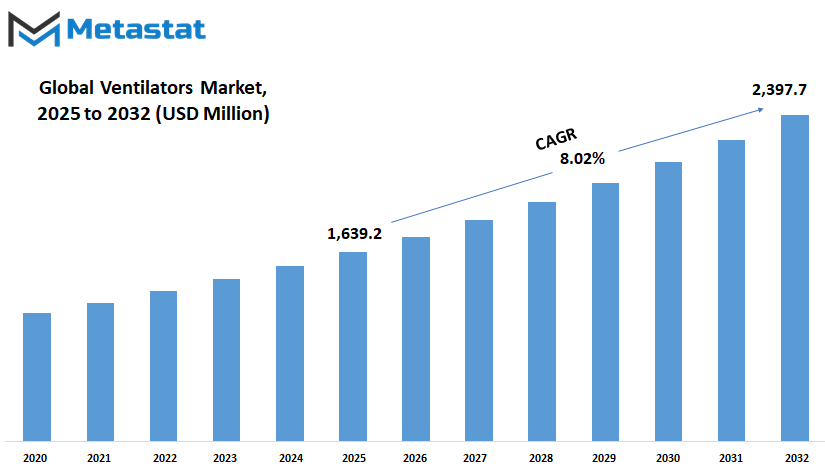
GROWTH FACTORS
The global ventilators market was captured to be stimulated by a range of factors linked with the heightened demand for these critical medical facilities. The world keeps aging, with such fact being linked with the rising rate of diseases on respiratory systems, thus leading to the rising demand for such facilities to hospitals and health-care destinations. Increasing numbers of conditions are confronting the growing prevalence of diseases such as COPD, asthma, and pneumonia that frequently need ventilator assistance to facilitate breathing.
The COVID-19 pandemic is also a principal growth factor in the global ventilators market. As a measure to augment the medical infrastructure in every country, governments and other concerned institutions understood the requirement and worked harder on improvement, including the manufacturing and supply of ventilators.
The sudden surge in critical cases due to the pandemic clearly indicated how urgent it was to have suitable, accessible ventilators in every healthcare system across the world. This need has focused not just on the conventional hospitals but also on the temporary health care environment that may be created in the event of an emergency or pandemic. Along with the growing healthcare demand, technological innovation has been viewed as a main cause of the expansion in the global ventilators market. Improved user-friendliness and efficiency have been brought in by the companies through more improved features, such as improved monitoring systems, portability, and non-invasive ones.
Such advancements have taken ventilators out of the confines of critical care units. The ventilators can now be provided at home care facilities where patients with chronic respiratory diseases can have ongoing care in a highly comfortable setting. Healthcare investment, particularly in emerging economies, is on the rise. Individuals there have access to quality health care since the quality is increasing. With more and more hospitals and clinics being established, particularly in developing areas, demand for ventilators will keep on rising.
In addition to enhancing patient care and outcomes as well as the overall effectiveness of treatment, advanced ventilators are being invested upon by the hospitals to provide greater control over breathing rhythms for patients and thereby increase the overall effectiveness of treatment. As the demand for ventilators rises, the industry is likely to grow even more based on cutting-edge technology, an increasing population of older people, the rising prevalence of respiratory illnesses, and the rising demand for proper medical equipment. This will go on developing the global ventilators market in accordance with the healthcare needs of the world.
MARKET SEGMENTATION
By Type
The Ventilators are likely to be one of the most commonly used medical devices to assist or govern the respiration of a patient who was not able to breathe properly on her/his own. Ventilators are classified as a group based on its application and purpose. The major categories of ventilators include four: invasive ventilator, non-invasive ventilator, portable ventilator, and high-frequency ventilator.
This occurs when a patient requires to have access to a more direct and controlled approach of the application of a ventilator. The invasive application of a ventilator is when air, for the purpose of ventilation, is directly applied into a lung via a tube in the airway of the patient, orally or nasally. It usually proves to be of tremendous significance to the critically ill and to a surgical patient. Invasive ventilators are the ones being used here, and thus they are very suitable for patients who require long term or intensive respiratory therapy. Inserting a tube into the patient's airway is not necessary with non-invasive ventilators.
They provide oxygen to the lungs of a patient by administering a mask or nasal prongs. These ventilators are generally reserved for patients whose breathing disorders do not constitute serious conditions. Sleep apnea or chronic obstructive pulmonary disease are some examples. Non-invasive ventilators are those forms of ventilators that can support some form of breathing assistance without performing invasive procedures on a patient, which can be much more comfortable to patients who may not necessarily need the extensive intervention of an operation.
A portable, light-weight ventilator that can be utilized in the case of an emergency, or for transport, the portable, light-weight ventilators that emergency responders such as paramedics can use can be used during transport; and applied to a patient until the patient can reach the hospital. Because the devices are portable, usability translates to being easily installed and ready to be applied in a number of different environments. High-frequency ventilators are ventilators utilized in specific circumstances where standard ventilation techniques might not suffice. The high-frequency ventilator provides extremely rapid breaths at an extremely high rate and provides finer control over the pressure of air and oxygen delivery. High-frequency ventilators are primarily utilized for very critically ill lung patients or premature infants in neonatal intensive care units whose lungs have not developed yet.
Both kinds of ventilators play a very crucial role in giving the best form of respiratory care suitable for the particular needs and health status of the patient. With the development of technology in medicine, such ventilators will also improve, bringing more efficient and comfortable ways to assist patients with breathing.
By Technology
Various technologies produce various ventilator markets, all geared towards a specific medical need. A microprocessor-actuated ventilator, where a sophisticated microprocessor adjusts ventilation, adjusts to meet fluctuating needs. Overall, these ventilators can provide accurate and detailed support to patients and hence have become well accepted in most hospitals and clinics.
Another extremely notable segment of the global ventilators market is smart ventilators. They are AI and IoT-powered. The entire concept of smart ventilators is to provide more customized care by keeping an eye on the condition of a patient round-the-clock and adjusting their settings according to real-time information. With the addition of AI, these ventilators gain from the response of the patient and become increasingly capable of providing optimal assistance to the patient over time.
Oxygen therapy ventilators are crucial machines employed to supply patients with the amount of oxygen needed for respiratory care. Ventilators are made to aid patients with low oxygen levels, which is usually a consequence of chronic lung diseases or acute respiratory disease. Oxygen therapy ventilators provide control over oxygen delivery and maintain it as consistent to avoid oxygen-related complications.
Pressure-controlled ventilators are a type of mechanical support that maintains a pre-set amount of pressure across the entire breathing cycle. These ventilators find massive application with patients where constant pressure of airflow is ensured, particularly when lung compliance can be changing. Pressure-controlled ventilators are generally used in patients with disorders of lung elasticity or for the preservation of lungs from over-expansion conditions.
Volume-controlled ventilators provide a set volume per breath independent of the pressure required to provide it. Volume-controlled ventilators are used primarily for patients in whom a consistent volume must be provided to maintain proper lung function.
With these ventilators, patients are assured the proper volume and, thus, a proper amount of air. This is very relevant for those patients who are afflicted by diseases that make them incapable of breathing in sufficient oxygen. Each of these modes of ventilators has a specific role to play in the care of patients, with technology improvements ensured that the assistance to the respiratory system will be increasingly sophisticated. With the technologies further developed, they will offer much more targeted, efficient, and tailored options for patients requiring assistance for the respiratory system.
By End-User
The global ventilators market is therefore segmented into a number of major divisions based on end-users, with varying needs and demand. Hospitals and healthcare setting are quite crucial in such a market since many products and services are required in handling patient care and improving general health improvement. Such settings may require specialized equipment, medical supplies, and technology to manage the treatment as well as the monitoring of such patients.
This is so because, as the global ventilators market, it is a representation of a hospital and the health industry; there will always be a constant need for innovations that can help improve quality care. There is also the homecare environment that has been one of the imperative segments of the market. As there has been an increase in patients requiring their care to be administered at home, the need for services and products provided in home environments has been increasing. Medical devices, assistive devices, and home healthcare services are all available to aid individuals in sustaining their health conditions along with maintaining their independence. This need is driven by the aging population and increasing interest in more personalized, less expensive care.
The second largest portion of the market would be for ambulances and emergency medical services. Specialized equipment and timely solutions of high efficiency are required for these services to provide instant treatment to the patient during emergency situations. Ambulances and EMS providers need to have the most advanced technologies and medical equipment to treat patients who typically have short windows to diagnose and treat. This implies that the need for products that can improve the effectiveness and timeliness of responses in the event of an emergency will continue increasing.
Long-term care and rehabilitation facilities are the last big segment in the market. They help patients with chronic illnesses, disability, surgery, or illnesses. Products will be needed, from mobility aids to rehabilitation devices and health monitoring devices. The long-term care and rehabilitation markets are expanding as more patients require long-term care. Each of these end-use segments is thus pivotal in the construction of the market and its expansion. The demand for improved healthcare solutions will keep on increasing, thus fueling innovation in new products and services aimed at improving patient results and overall care experiences.
By Application
The global ventilators market is segmented in a wide manner based on its various applications, each to meet a specific medical need. Some of the most significant among them are chronic respiratory diseases, chronic obstructive pulmonary diseases (COPD) and asthma. Patients suffering from such diseases need the constant support of ventilators in regulating the proper amount of air flow and oxygen in the respiratory system. Ventilators within this category are typically designed for individuals requiring constant assistance since the operational state of their respiratory mechanism would be subpar.
The other significant application of such machines is acute respiratory disease. This includes patient presentations with sudden, severe compromise to breathing, potentially secondary to illness like pneumonia and lung infection or direct trauma. These acute breathing failures can develop rather acutely, and rapid initiation of ventilatory support is required for stabilization of the condition responsible for respiratory dysfunction. This is exactly what ventilators are for: maintaining patient oxygenation during stabilization of the condition producing respiratory insufficiency.
The surgical category also encompasses another very significant one, which is ventilation. Many surgeries, primarily in the chest and abdominal regions, need patients to be put on ventilators. Occasionally, anesthesia impacts the body's capability to breathe so that ventilators are used to ensure the patient will continue receiving sufficient oxygen throughout the surgery. This application of ventilators in surgeries is to prevent complications and stabilize the patient throughout the surgery. Pediatric and neonatal ventilation is the delivery of ventilators to children and neonates. Infants, particularly premature ones, usually possess underdeveloped lungs that need support to breathe easily. Children too, who are affected with respiratory diseases, might need the support of a ventilator to help them breathe. Ventilators utilized in such instances are especially meant for smaller patients and are proportioned according to their specific respiratory requirements.
Sleep apnea is a second application of ventilators. Sleep conditions that lead to interruptions in airflow will be managed by a device of the sort that guarantees air is moving through the tracts. The standard type of ventilator that operates to cure sleep apnea are PAP machines: they guarantee that there's continuous flow of air through patients' tracts, not an interruption of breathing while a person is sleeping. These apps reveal the necessity of ventilators in addressing a range of respiratory issues and life-supporting aid in various medical environments.
|
Report |
Details |
|
Forecast Period |
2025-2032 |
|
Market Size in 2025 |
$1,639.2 million |
|
Market Size by 2032 |
$2,397.7 Million |
|
Growth Rate from 2025 to 2032 |
8.02% |
|
Base Year |
2022 |
|
Regions Covered |
North America, Europe, Asia-Pacific Green, South America, Middle East & Africa |
REGIONAL ANALYSIS
The global ventilators market is segmented into regions namely North America, Europe, Asia-Pacific, South America, and Middle East & Africa. North America includes the U.S., Canada, and Mexico. In Europe, it includes the UK, Germany, France, Italy, and all other regions of the area named as Rest of Europe. Asia-Pacific region includes important nations such as India, China, Japan, and South Korea, and other areas including the Rest of Asia-Pacific. In South America, the market is segmented into Brazil, Argentina, and the remainder of the continent, i.e., Rest of South America. Middle East & Africa region comprises the GCC nations, Egypt, South Africa, and the remaining area that is referred to as Rest of Middle East & Africa. Segmentation at the regional level aids in comprehending the extent of markets and demand within varying geographies.
Each region is unique to its market characteristics together with variations in demand levels, technological advances, and other regulatory environments. North America, for instance, is one of the top markets, primarily due to the influence of the U.S., which boasts sophisticated healthcare systems and high healthcare demands for ventilators, especially in critical care units. Europe, with its strong healthcare infrastructure, also commands a strong position in the market, with Germany and the UK being prominent among them. Asia-Pacific, a region of strong demand for global ventilators market, especially among the Asian giants, China and India, whose population is increasing and healthcare needs are growing rapidly.
South America, being comparatively smaller in size compared to the rest, also shows a steady growth pattern in demand for global ventilators market with the development of the healthcare system and the growing need for patient care. Likewise, the Middle East & Africa region, with its vastly disparate healthcare ecosystems, shows divergent trends across nations but with much room for expansion in both regions. In total, these divisions give a much better picture of the world market trends in various locations, which would be a help in distributing and producing ventilators in a larger quantity globally.
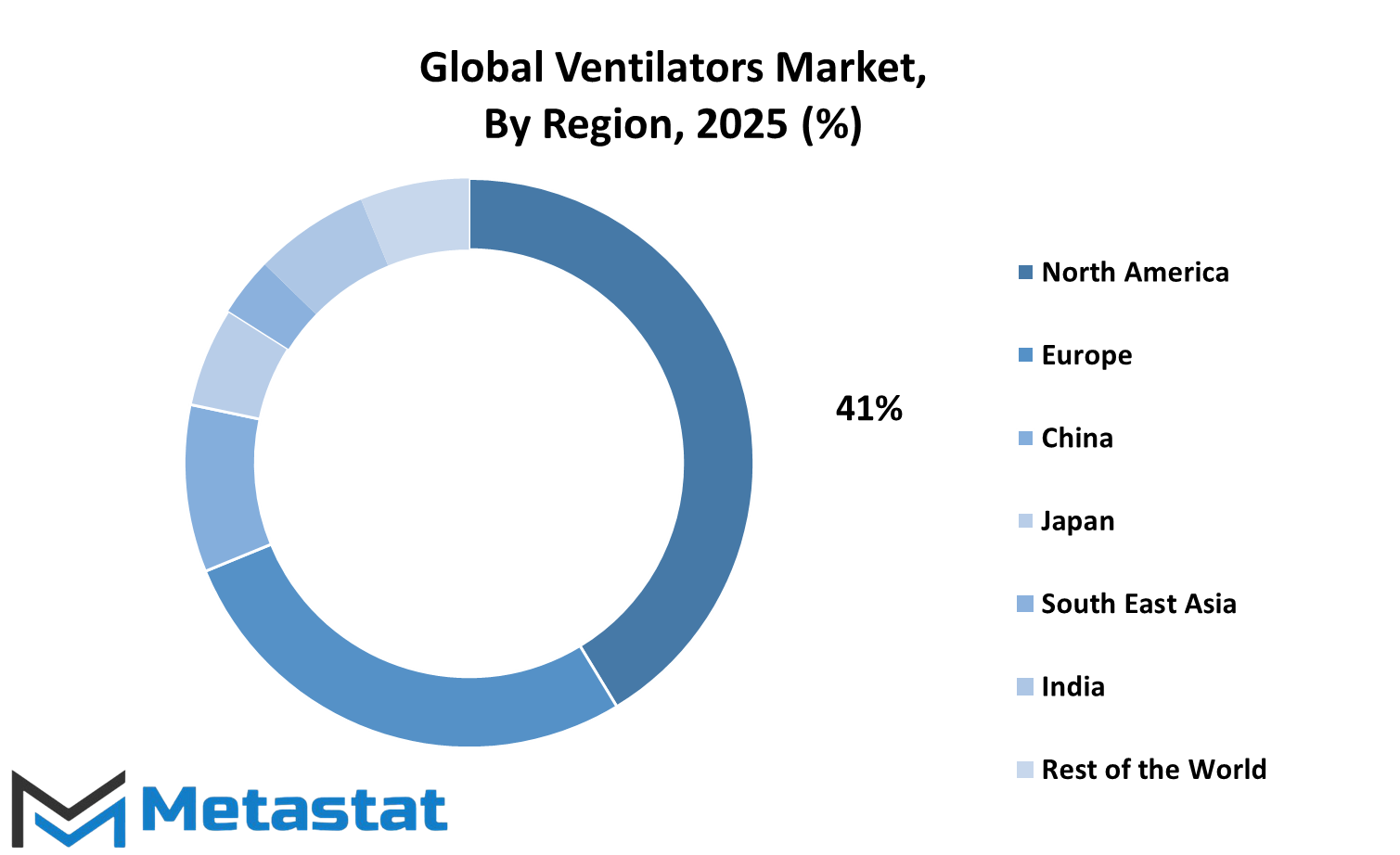
COMPETITIVE PLAYERS
The global ventilators market based on their high-tech products and offerings. Major firms driving this market based on their products are Philips Healthcare, Medtronic PLC, GE Healthcare, and Drägerwerk AG & Co. KGaA. These are some dominant firms in the healthcare industry and have been a valuable contributor to the growth of ventilators which are most crucial for the patient suffering from a respiratory issue.
ResMed Inc. and Hamilton Medical are also notable because they offer ventilation equipment for home and hospital care. Their products are very reliable and convenient to use, making them a hit among medical professionals. Fisher & Paykel Healthcare Corporation and Vyaire Medical, Inc. further contribute alternatives in healthcare providers, with an emphasis on products that could improve patient comfort and the overall performance of the ventilator system.
Other players, including Becton Dickinson and Company, Air Liquide Healthcare, and Getinge AB, also play important roles in the ventilator market. These players, in addition to producing ventilators, support the overall health system by generating complementary technologies and services.
Other organizations that have left notable impacts in the ventilator industry are Mindray Medical International Limited and Nihon Kohden Corporation. They are organizations renowned for their medical equipment, always striving to make the efficiency of the products even greater. Further, Zoll Medical Corporation is also known for manufacturing lifesaving technologies, of which the ventilators save numerous patients in critical care.
These organizations are market leaders and innovators, constantly evolving ventilator technology to keep up with the growing demand for respiratory assistance worldwide. They continue to supply hospitals, clinics, and homecare environments as they go on to supply products and solutions to guarantee that their patients receive the finest care possible. As the industry evolves, so will these dominant players in the center of ongoing development and delivery of life-saving ventilatory therapy.
Ventilators Market Key Segments:
By Type
- Invasive Ventilators
- Non-invasive Ventilators
- Portable Ventilators
- High-Frequency Ventilators
By Technology
- Microprocessor-Controlled Ventilators
- Smart Ventilators (AI-driven, IoT-based)
- Oxygen Therapy Ventilators
- Pressure-Controlled Ventilators
- Volume-Controlled Ventilators
By End-User
- Hospitals & Healthcare Facilities
- Homecare Settings
- Ambulances & Emergency Medical Services (EMS)
- Long-term Care & Rehabilitation Centers
By Application
- Chronic Respiratory Diseases
- Acute Respiratory Conditions
- Surgical Ventilation
- Neonatal and Pediatric Ventilation
- Sleep Apnea
Key Global Ventilators Industry Players
- Philips Healthcare
- Medtronic PLC
- GE Healthcare
- Drägerwerk AG & Co. KGaA
- ResMed Inc.
- Hamilton Medical
- Fisher & Paykel Healthcare Corporation
- Vyaire Medical, Inc.
- Becton Dickinson and Company
- Air Liquide Healthcare
- Getinge AB
- Mindray Medical International Limited
- Nihon Kohden Corporation
- Zoll Medical Corporation
WHAT REPORT PROVIDES
- Full in-depth analysis of the parent Industry
- Important changes in market and its dynamics
- Segmentation details of the market
- Former, on-going, and projected market analysis in terms of volume and value
- Assessment of niche industry developments
- Market share analysis
- Key strategies of major players
- Emerging segments and regional growth potential




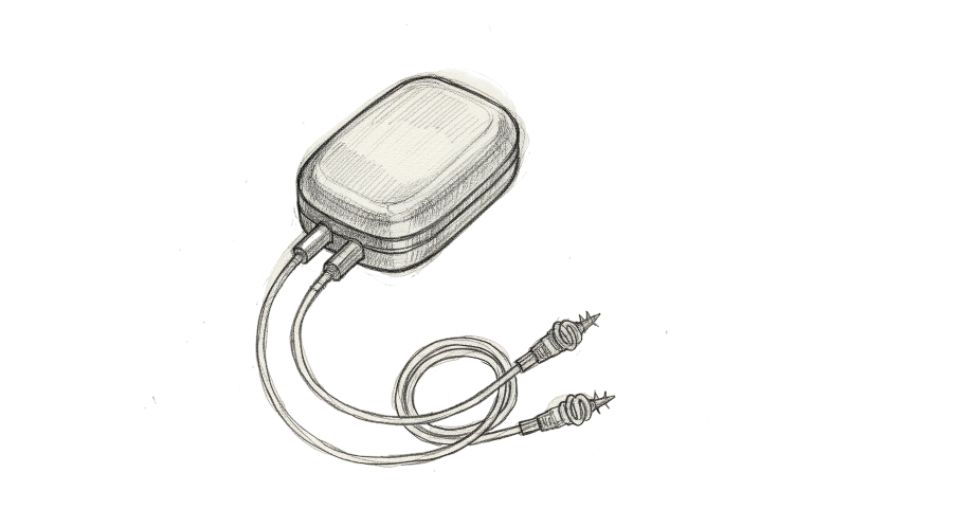
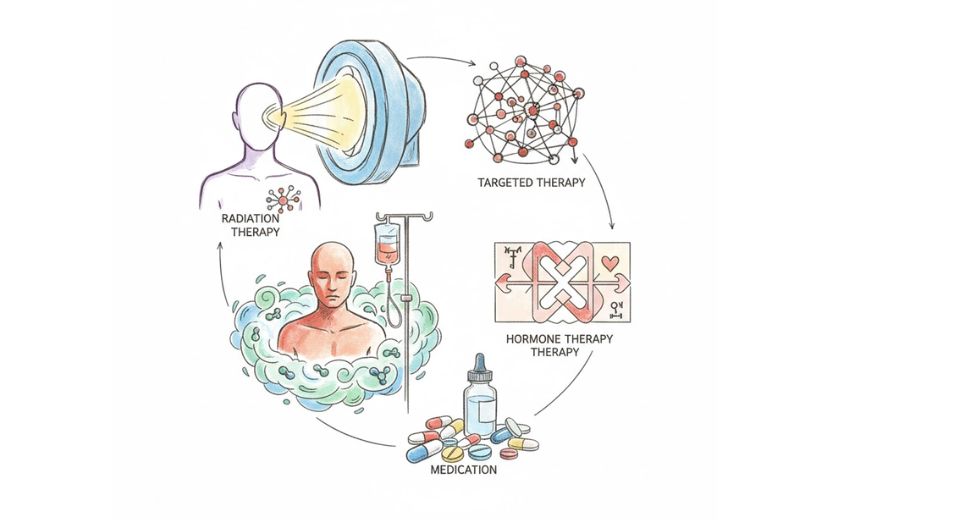
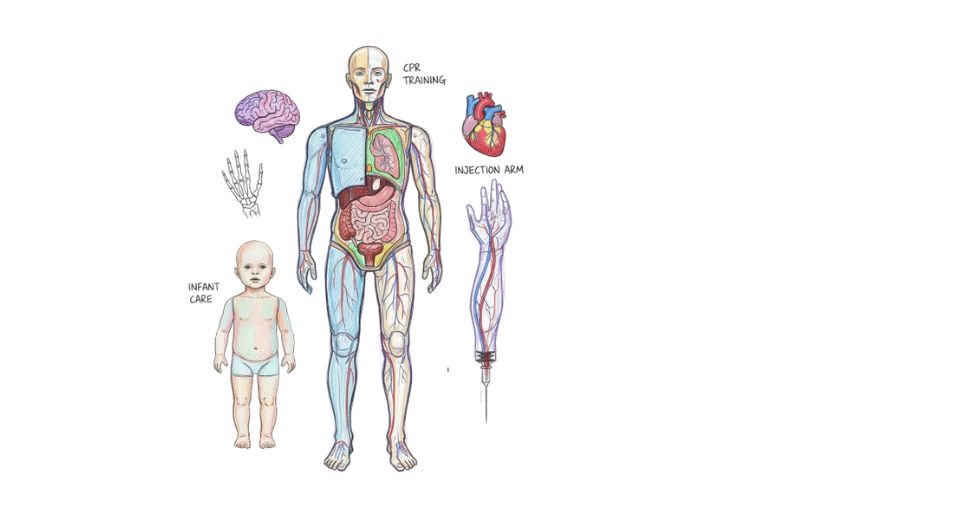

 US: +1 3023308252
US: +1 3023308252






